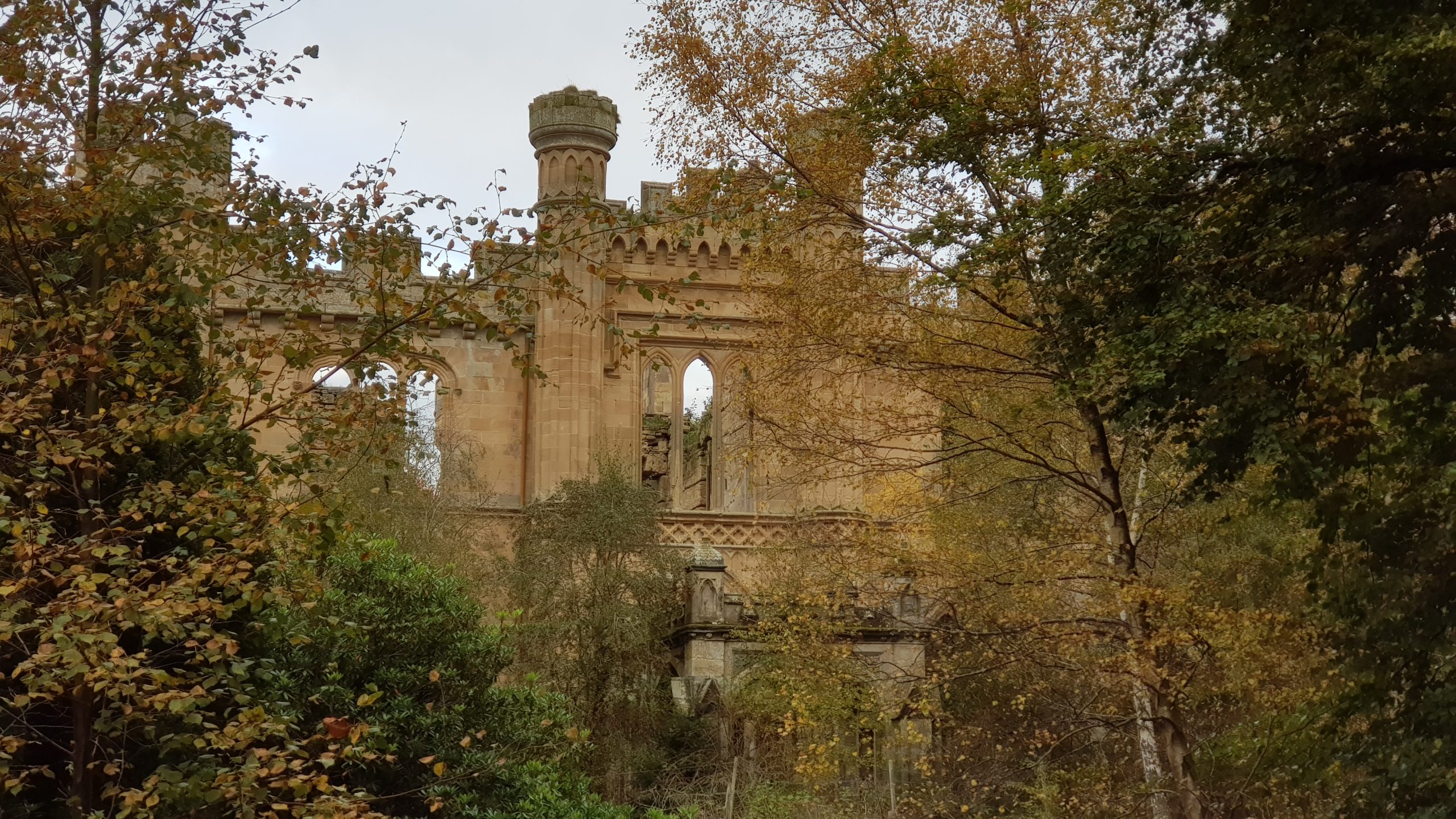Scottish Philanthropy Snippet – Lady Mary Lindsay Crawford
Lady Mary Lindsay Crawford (1760-1833)
A spectre of a philanthropist
It is Halloween; it is stormy. So, what better time to focus on a philanthropist whose ghostly apparition is said to wander around the grounds of Crawford Priory on windy days: Lady Mary Lindsay Crawford. The reason for dedicating a Scottish Philanthropy Snippet to Lady Mary is not what her case tells us about Scottish philanthropy. Quite the opposite. The rationale for choosing her is the lack of knowledge about her philanthropic activities that can be gleaned. Despite being a memorable and unique character during her lifetime, and despite clear indications of her philanthropic activities, details are lost and little is known or remembered about her philanthropic acts, illustrating the challenges of and need for more explicit engagement with Scottish philanthropy’s female history.
Born in Irvine, Ayrshire, Scotland on 16th May 1760, Lady Mary was one of five children of George Earl Lindsay-Crawford and his wife Jean Hamilton. Described as ‘quite a character – belonging to times that are gone by’ [1] the little that is known about Lady Mary is associated with Crawford Priory, a ruin one stumbles across walking along the River Eden in the Fife countryside.
Replacing Crawford Lodge, the estate Lady Mary inherited as the last in the line of the Lindsays of the Byres on the death of her brother, the 22nd Earl of Crawford, Crawford Priory was designed by Scottish Architects David Hamilton and James Gillespie Graham in the manner of a Gothic chapel [2]. Opulent in appearance, the building and surrounding lands included numerous eccentricities, such as a menagerie of animals, both pets and wild, in and around the mansion. Combined with Lady Mary’s own reputation as an unconventional personality, flaunting conventions and ‘scandalising society’, a clear tension between her public perception and portrayal on the one hand and her private persona and practices on the other hand can be identified.
Reflecting on his ancestors’ family strands, Lord Lindsay in his ‘Memoir of the Houses of Crawford and Balcarres’ describes the personality and philanthropy of Lady Mary as follows:
‘her mind of a masculine order, her spirit high, independent, and unscrupulous, her temper haughty to those who did not understand, or presumed to contradict her prejudices…[b]ut access to her papers enables me to speak of much of which the world in general knew nothing — of kind attentions, acts of generosity, little minute delicacies, most unworldly and ideal, to every one with whom she came into contact,—of the judicious bestowal of money, in loan or gift, on the deserving…which may balance the remembrance of eccentricities, many doubtless and to be regretted, but which almost invariably, as was remarked by a commentator on her character immediately after her death, “leaned to virtue’s side and the cause of humanity.”‘ [1]
Further details of Lady Mary’s charitable activities, however, remain limited; they tend to focus on general observations. This is illustrated in one of her obituaries: ‘A considerable sum is also left to the poor of the parish. Her domestics, several of whom have been many years in her service, and whom, shortly before her death, she thanked for their long and faithful attentions, are kindly remembered in her will. Even her anxiety for the kind of treatment of the numerous animal favourites she protected during her lifetime, has been bequeathed by her will‘ [3]
As time has progressed, Lady Mary’s charitable activities, unlike the opulence of Crawford Priory, seem to have been forgotten: ‘[t]he cynical moralist might illustrate the vanity of human wishes by showing that whilst Lady Mary Lindsay Crawford has “built her soul a lordly pleasure-house” at Crawford Priory during her lifetime, her body now rests uncared for in a neglected and nameless tomb, the walls of which are crumbling into dust for the lack of a little pious care and reverent affection.’ [4]
References
[1] Lord Lindsay, 1858, Lives of the Lindsays; or, A Memoir of the Houses of Crawford and Balcarres, Vol II, 2nd ed., John Murray: London
[2] https://www.buildingsatrisk.org.uk/details/894349
[3] The Gentleman’s Magazine, January to June 1834, https://books.google.co.uk/books?id=50JDAQAAMAAJ&printsec=frontcover#v=onepage&q&f=false
[4] Cited at https://holeousia.com/time-passes-listen/ruins/crawford-priory-2/


